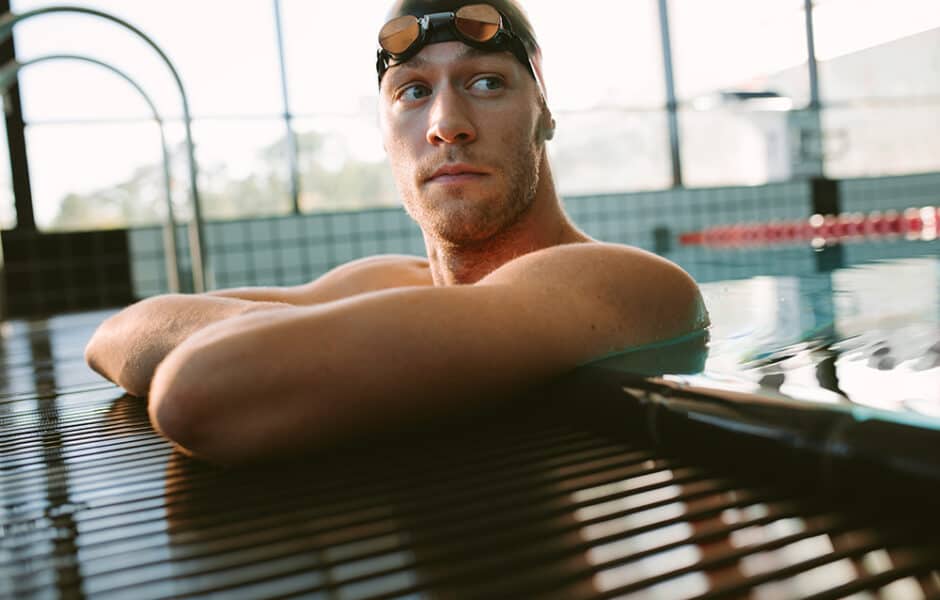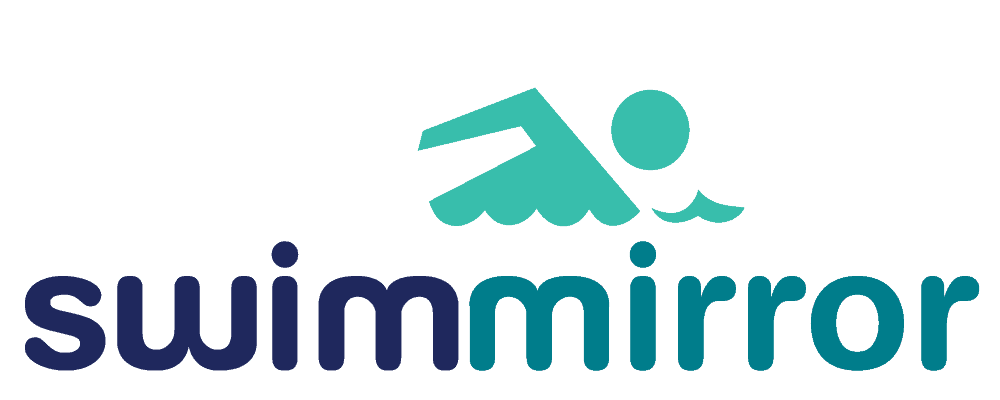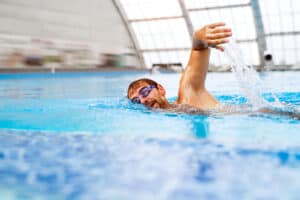IS A RECOVERY SWIM WORKOUT BETTER THAN PASSIVE RESTING?

Recovery Made Faster
If you’ve ever finished a particularly grueling swimming competition, or if you’re just the kind of person to push yourself in your workouts, then you know better than anyone that breaks are essential. However, while rest is vital to recuperation, staying docile for too long can cause unforeseen problems. From a continuously degrading performance in the water to injuries, passive recovery may not be the best choice if you’re a competitive swimmer.
In this article, we’ll explain:
- What a recovery swim workout is
- Some of the science behind it
- Why it may be better for you than passive resting
- And examples you can add to your training regimen.
What Is a Recovery Swim Workout?
To put it simply, a recovery swim workout is a gentle exercising session that isn’t meant to push your body to its limits but to encourage recovery. But how does working out, even gently, help you recover faster? It mostly comes down to the buildup of lactic acid in your body.
Studies have shown that athletes who partook in recovery swim workouts recovered from blood lactate (lactic acid) buildup faster than those who rested. If you swim competitively or simply push yourself hard in the water on a regular basis, you might want to reconsider sedentary days off.
Why Does a Lactic Acid Buildup Matter?

Learn about the best breakfast foods to fuel your body for a day of swimming!
This buildup of lactic acid is what causes the “burn” we all know, and it’s the body’s way of making you stop before you physically collapse. This buildup can sometimes take days to diminish, and if you’re a competitive swimmer or particularly aggressive with your workouts, this lactic acid buildup will slow you down. If you can’t afford, or simply don’t want to take it easy, then a recovery swim workout will hasten your body’s recovery.
Why Shouldn’t I Rest Passively?
Some rest is always better than none, and it’s not like sitting down for a couple of days is bad for you; it all depends on how intensely you train. If you’re a casual swimmer, passive rest days are fine. However, if you’re aggressively pushing yourself in the water, purely sedentary days might lead to problems.
First of all, it’s not as efficient at flushing out the lactic acid as we’ve already discussed, but it can also lead to injuries. Every day you spend resting is a day your body grows less accustomed to the rigors of your usual workout regimen. You may find that leaping back into an intense session after passively resting will catch your body off guard and lead to a muscle pull.
An active recovery via a recovery swim workout keeps your body in the zone, even though it’s pushing at a far more leisurely pace.
What’s a Good Recovery Swim Workout I Can Do?
The key is to avoid pushing yourself too hard, and what’s considered “too hard” is going to vary from person to person. However, there are a few generalized workouts you can do to keep the blood flowing and that lactic acid flushing out. Just remember to cut it short if the workout’s starting to become arduous, but don’t skip the warmup or cooldown periods. The point isn’t to push your limits like your other workouts.
Beginner Recovery Swim Workout
Warm Up
- 50-meter breaststroke using only your arms
- 50-meter kicks, using a flotation device to keep your torso upright
Primary Set
- 100-meter freestyle
- 200-meter freestyle, but do the first 50 with a backstroke
Cooldown
- 100-meter freestyle, but take it easy
Advanced Recovery Swim Workout
Warm Up
- 100-meter backstroke
Primary Set
- 200-meter freestyle, but do the first 50 with a backstroke
- 100-meter dolphin kicks
- 100-meter breaststroke with dolphin kicks
- 50-meter backstroke
- 50-meter freestyle
Cooldown
- 200-meter casual freestyle
Can I Swim Every Day?

A great way to gauge whether active recovery days are helping you is to time your laps every day of the week. If you see an uptick in your speed, keep going. But, if you’re seeing your speed stagnate or even slow down, then you’ll need to reevaluate your resting periods. The answer could be that your recovery swim workout sessions are too intense, and you’re not giving yourself the time you need to recover, or perhaps you need to update your daily nutrition to keep your body fueled.
We highly suggest signing up with a professional coach who can give you the guidance you need to push yourself to the next level.
Try Out an Active Recovery Day!
It’s always mentally challenging to replace a passive rest day with an active one, but give it a shot. You should find that a good workout for active recovery makes your next true session that much easier!
If you want to compete seriously, then start adding active recovery to your regimen.





